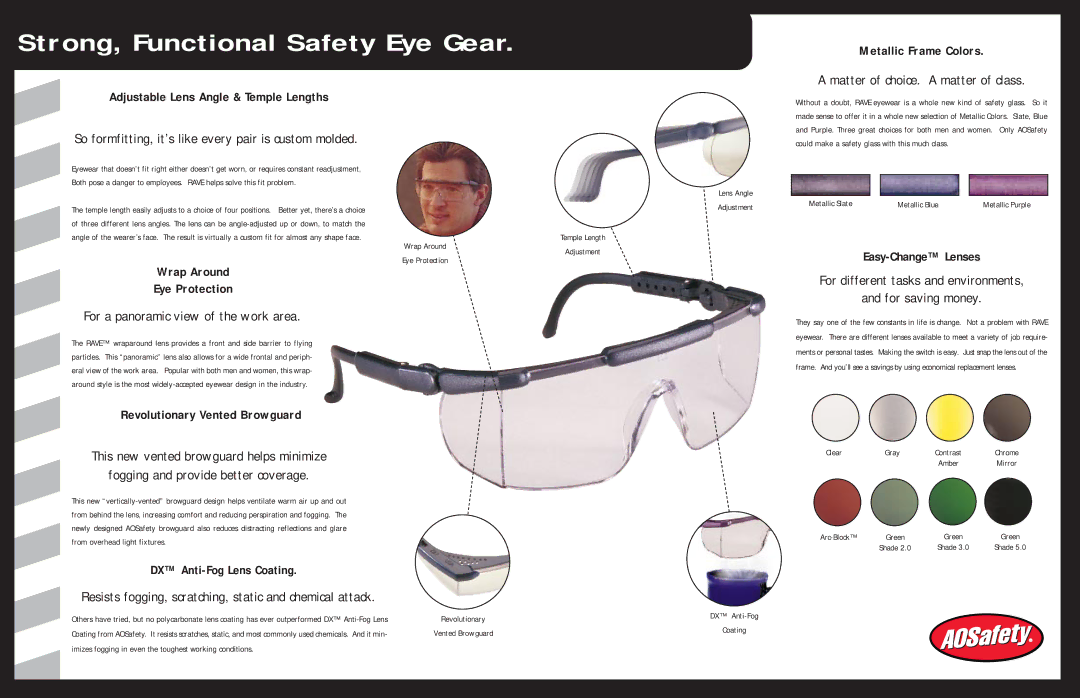CSA Z94.3-92, ANSI Z87.1 specifications
AOSafety CSA Z94.3-92 and ANSI Z87.1 are essential standards designed to ensure the safety and effectiveness of protective eyewear. These standards address the performance requirements for various types of eye and face protection used in industrial, construction, and other hazardous work environments.The CSA Z94.3-92, established by the Canadian Standards Association, outlines the requirements for ocular protection devices, emphasizing their ability to withstand impacts, provide optical clarity, and offer resistance to chemical exposure. This standard encompasses a wide range of protective eyewear, including safety glasses, goggles, and face shields. The primary focus is on impact resistance, which is critical for worker safety. Eyewear that meets CSA Z94.3-92 is tested against various impact scenarios to ensure it can withstand sudden force without shattering or causing harm to the wearer.
On the other hand, the ANSI Z87.1 standard, created by the American National Standards Institute, similarly identifies the performance criteria for safety eyewear in the United States. The ANSI Z87.1 standard includes rigorous testing for optical quality, including parameters like lens thickness, optical distortion, and scratch resistance. This standard also addresses the potential for side protection in eyewear designs to shield wearers from flying particles, dust, and chemicals.
A significant feature of both CSA Z94.3-92 and ANSI Z87.1 is their classification system, which categorizes protective eyewear based on its intended use and level of protection. For instance, eyewear is rated for use in various occupational settings, ranging from light industrial environments to heavy-duty applications. This classification assists users in selecting the most suitable eyewear based on specific workplace hazards.
Modern technologies implemented in eyewear meeting these standards include anti-fog coatings, scratch-resistant materials, and UV protection. Many manufacturers employ advanced polycarbonate lenses that are lightweight yet highly resistant to impact. Additionally, the incorporation of ergonomic designs ensures a comfortable fit, promoting prolonged wear without discomfort.
In summary, both AOSafety CSA Z94.3-92 and ANSI Z87.1 standards play a pivotal role in protecting workers' eyes in hazardous environments. They offer a framework for evaluating the effectiveness of protective eyewear, promoting innovation in design and materials to enhance safety performance. Compliance with these standards not only ensures legal adherence but also fosters a culture of safety in the workplace.

